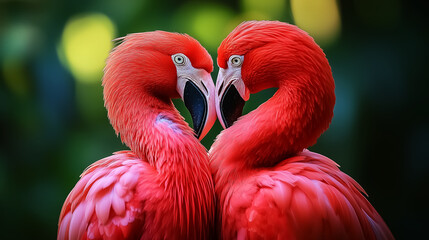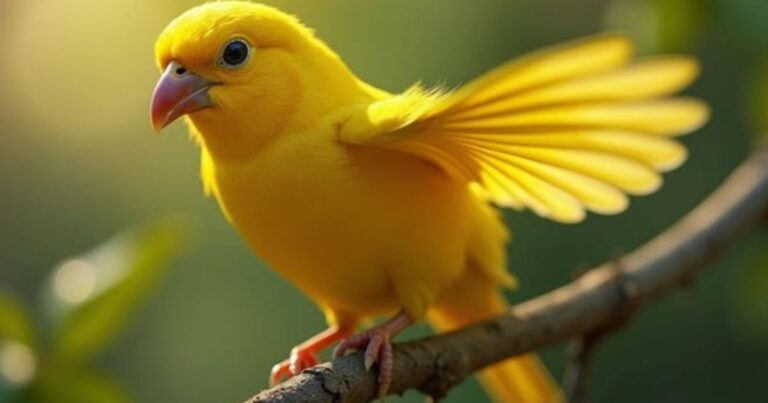Grace in Pink: Exploring the World of Pink Birds
When you think of vibrant and stunning creatures, the pink bird is sure to come to mind. Whether it’s the graceful flamingo wading through shallow waters or the rare roseate spoonbill gliding across the wetlands, pink birds have long been a symbol of beauty, elegance, and the mysteries of nature. Their striking pink plumage captures the imagination and offers a glimpse into the fascinating world of avian life. But why do some birds have pink feathers? And what makes these birds so unique?
In this post, we’ll dive deep into the world of pink birds, introducing some of the most iconic species and unraveling the reasons behind their captivating color.
The Flamingo: Nature’s Elegant Pink Statue
One of the most iconic pink birds in the world, the flamingo is instantly recognizable due to its long, slender neck, tall legs, and vibrant pink feathers. Flamingos are found in shallow lakes, coastal lagoons, and mudflats, primarily in tropical and subtropical regions across the globe, including Africa, the Americas, and parts of Asia.

The flamingo’s pink color comes from its diet, which is rich in carotenoid pigments found in algae and tiny crustaceans like brine shrimp. These pigments are broken down in the bird’s liver and then deposited in the feathers, giving the flamingos their signature pink or even orange color. Interestingly, flamingos are born with gray feathers, and they only begin to develop their pink hues as they mature and consume more carotenoid-rich food.
Flamingos are highly social birds and often live in large colonies, sometimes numbering in the thousands. They perform synchronized movements and even create elaborate displays of courtship. Their long, flexible necks allow them to filter-feed while standing in water, another trait that makes them so unique.
The Roseate Spoonbill: A Splash of Pink in Wetlands
The roseate spoonbill is another beautiful pink bird that adds a splash of color to the wetlands. Native to the Americas, this striking bird can be found along the southeastern United States, as well as in parts of Central and South America. What sets the roseate spoonbill apart is its unique, spoon-shaped bill, which it uses to sweep through shallow waters in search of food like small fish, crabs, and insects.
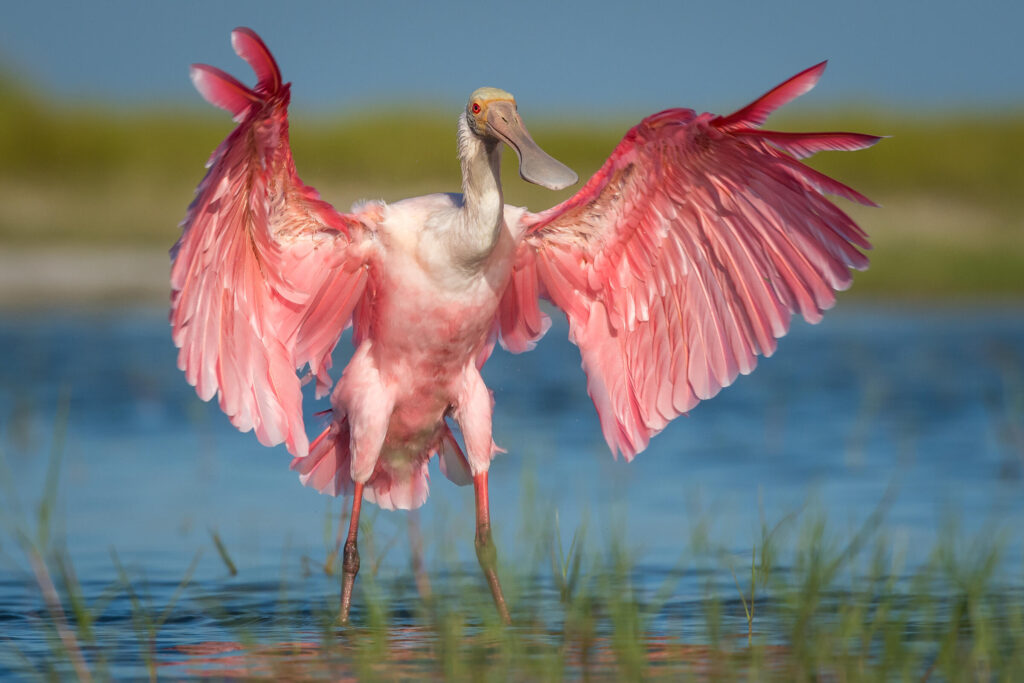
Like flamingos, roseate spoonbills get their vibrant pink feathers from their diet. They consume a variety of algae and invertebrates rich in carotenoids, which, over time, give their plumage its stunning pink hue. During mating season, the roseate spoonbill’s color can become even more vibrant, making it an impressive sight in the wild.
These birds often live in colonies near coastal and freshwater marshes, where they build their nests in trees or shrubs. Their habitat is crucial to the balance of wetland ecosystems, as they help control populations of small aquatic life.
The Pink Robin: A Tiny Beauty from Down Under
While the flamingo and spoonbill may steal the spotlight with their large sizes, the pink robin is a small but equally stunning pink bird. Native to the temperate forests of southern Australia, the pink robin is a shy and elusive species. Its vibrant pink chest makes it stand out against the otherwise muted green and brown tones of its forest habitat.

This small songbird spends most of its time on the forest floor, foraging for insects, spiders, and seeds. The male pink robin has a brighter pink coloration than the female, which is a characteristic seen in many bird species. The pink robin’s preferred habitat is cool, dense forests with a mix of tree cover and undergrowth, where it can find ample food and shelter.
Although the pink robin is not endangered, its population is subject to fluctuations due to habitat loss and the effects of climate change. Conservation efforts focus on preserving its forest habitats to ensure the continued survival of this delicate bird.
The Pink-headed Duck: A Rare and Elusive Treasure
The pink-headed duck is one of the most mysterious and rare pink birds in the world. Native to the wetlands of India and Myanmar, this elusive species has not been reliably seen in the wild for decades. While it was once relatively common in its range, the pink-headed duck’s numbers declined dramatically due to habitat destruction and hunting pressures.
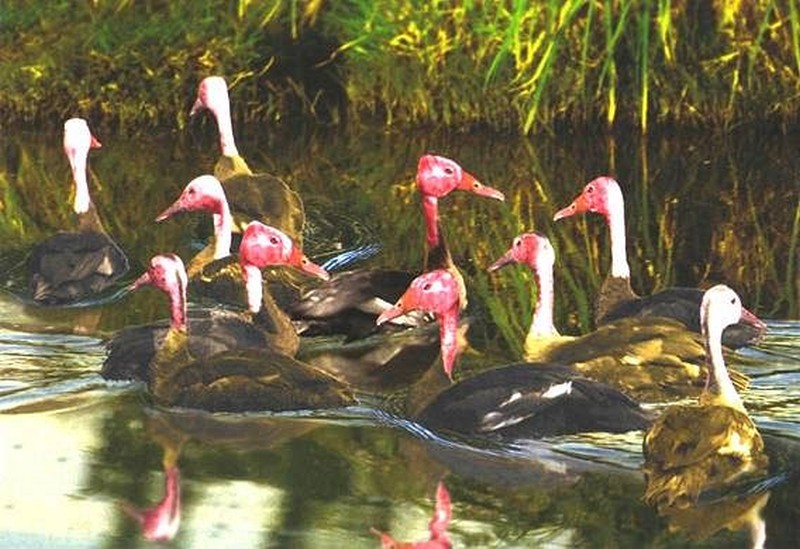
As its name suggests, the pink-headed duck has a distinctive pinkish head, which contrasts with its otherwise brownish body. It was once found in slow-moving rivers, marshes, and lakes, where it fed on aquatic plants and invertebrates. Despite being nearly extinct in the wild, the pink-headed duck remains an important symbol for conservationists working to protect wetland ecosystems.
There have been occasional reports of sightings in remote areas, but no confirmed sightings in the wild since the 1940s. Efforts to locate and possibly reintroduce this bird into its natural habitat continue, but time is running out for this rare species.
The Rose-breasted Grosbeak: A Pink Flash in the Forest
The rose-breasted grosbeak is a stunning North American bird that’s often referred to as the “pinker” robin due to its similar size and shape but with a bright rose-colored breast. Native to North America, the rose-breasted grosbeak is mostly found in forested areas, especially in the northern parts of the continent, including Canada and the United States.
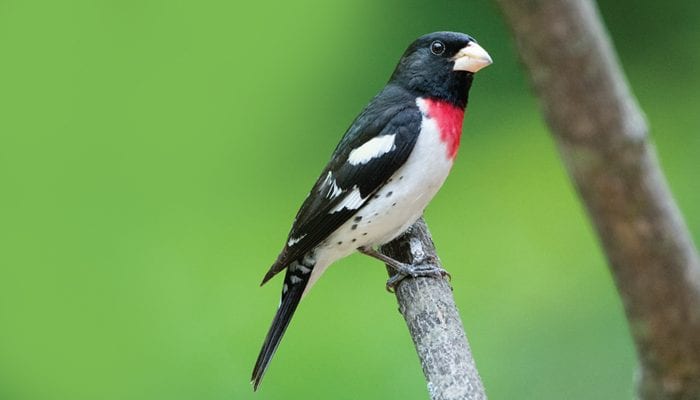
During the breeding season, the male rose-breasted grosbeak is a striking sight, with his black head, white belly, and bright pink breast that stands out against the green forest background. The female, while not as colorful as the male, still sports subtle shades of brown and pink on her breast. These birds are often found perched on tall trees, singing their melodious tunes. They are known for their diverse diet, which includes seeds, fruits, and insects.
The rose-breasted grosbeak migrates to Central and South America during the winter months, where it joins other bird species in tropical and subtropical habitats. Their return in the spring marks a joyous occasion for bird watchers who eagerly anticipate seeing these pink-feathered beauties.
Conclusion
Pink birds, with their delicate and vibrant hues, are truly one of nature’s wonders. From the elegant flamingo to the rare pink-headed duck, each of these birds offers a unique insight into the role color plays in the avian world. Whether it’s for camouflage, attracting mates, or feeding, the pink hues of these birds are far more than just a striking visual; they are a part of each bird’s survival and natural history.
If you’re ever lucky enough to spot one of these magnificent creatures, you’ll understand why pink birds are such a beloved symbol of the beauty and diversity of the natural world. Let’s continue to support conservation efforts that protect these vibrant species and the habitats they depend on.
You can more about the birds, dogs and other animals by visiting home page of our website “Animals Life Grow“.

